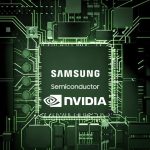Among the first two smartphone chipsets to be manufactured by foundry TSMC using the 5nm process node are Apple’s A14 Bionic and Huawei’s HiSilicon Kirin 1020. We can show you what this all means by giving you some numbers. Each 7nm A13 Bionic, currently powering the iPhone 11 family and the , contains 8.5 billion transistors; the A14 Bionic chip has 15 billion transistors shoehorned inside. The more transistors inside a semiconductor, the more powerful and energy-efficient it is.
Huawei’s 5nm Kirin 1020 SoC said to be more expensive to produce than Apple’s 5nm A14 Bionic
, …
Powered by WPeMatico






